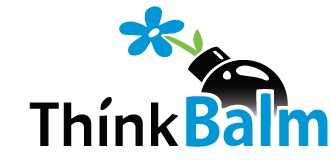- in Blog Articles by Erica Driver
Recipe for a great 3D brainstorming session
In late October the ThinkBalm Innovation Community held its third brainstorming session. Sixteen members of this vibrant tribe gathered to discuss a question one of the community members (Leslie Pagel, VP of Customer Experience at Walker Information) was wrestling with: “What can I do to get newbie professionals started with Second Life?”
Given that Leslie’s question was focused on Second Life, we met in the community’s brainstorming space in that virtual world — had the question been about some other environment, we may have met elsewhere, like our OpenSim space. It is important to note that although this discussion was specifically about Second Life, our learnings from it apply to any immersive environment used for work.
To facilitate the session, we used an early version of a 3D mindmapping tool one of our community members built (Jeff Lowe, Project Manager, University of Oklahoma Center for Public Management) (see Figure 1). After the session Jeff exported the content of the 3D mind map to a 2D Web-based mind map. We also used a name tag tool he built (see Figure 2) and an interactive polling tool he modified for our use.
Focus on one of us, impact on all of us
While we were brainstorming solutions to one community member’s specific situation, the session was valuable for all of us. We know this because at the end of the session we asked participants to input their high-level feedback into an interactive polling tool (see Figure 3). Not only did we share and gain knowledge, we strengthened community relationships and gained valuable experience collaborating in an immersive environment. And as a result of this session, Leslie Pagel changed her target audience for Walker Information’s initial Immersive Internet foray, began to identify internal allies, and started a list of vendors and other organizations she could reach out to for assistance.
If you are ready for your own home-brew brainstorming sessions within an immersive environment, here is the ThinkBalm Innovation Community recipe:
Ingredients
- A problem that can be moved toward resolution with brainstorming
- A (virtual) room full of smart people
- One hour minimum
- A 3D mind mapping tool
- Some mechanism for displaying participants’ real names with their avatars
- Private 3D space in which to meet
- Voice and text chat tools
- An interactive polling tool (optional)
Instructions
Ahead of time
- Designate the following roles: challenger (person who has a problem they need solved), moderator (to keep the conversation flowing and on target), tech support person (to help participants use the name tag tool, 3D brainstorming tool, voice and text chat tools, etc.), and scribe (to capture ideas on the 3D mind map tool or via text chat).
- Optional: engage the participants in discussion about the topic to be brainstormed (e.g., via blog, wiki, discussion thread, etc.)
- Distribute information to participants about the issue to be brainstormed.
During the brainstorming session
- Gather smart people in a 3D virtual space that is free from unwanted visitors and excessive distractions.
- If the immersive environment cannot associate participants’ real names with their avatars (a Second Life-specific problem), provide participants with a virtual name tag that displays their name and, optionally, affiliation.
- Have all participants introduce themselves either by voice or text chat (approx. 5-10 minutes).
Give a brief tutorial on how to use the 3D mind mapping tool. Give participants a few minutes to try it out (5-10 minutes). - Have the challenger introduce the issue with which he/she is wrestling (5-10 minutes).
- Go at it! Have participants toss out suggestions for how the challenger could solve the problem and ask clarifying questions of the challenger if needed. Have participants add nodes to the 3D mind map throughout the conversation (30-40 minutes). Encourage not only voice but also text chat conversations on the topic.
- Have the moderator summarize the main points of the discussion.
- Optional: Ask participants to provide feedback on the session.
After the meeting
- Optional: Provide a copy of the artifact(s) of the meeting to all participants. Artifacts may include a copy of the text chat transcript or2D or 3D mind maps.
- Optional: continue the discussion, either with the 3D mind map or via a “flat” tool like blog, wiki, or discussion thread.
